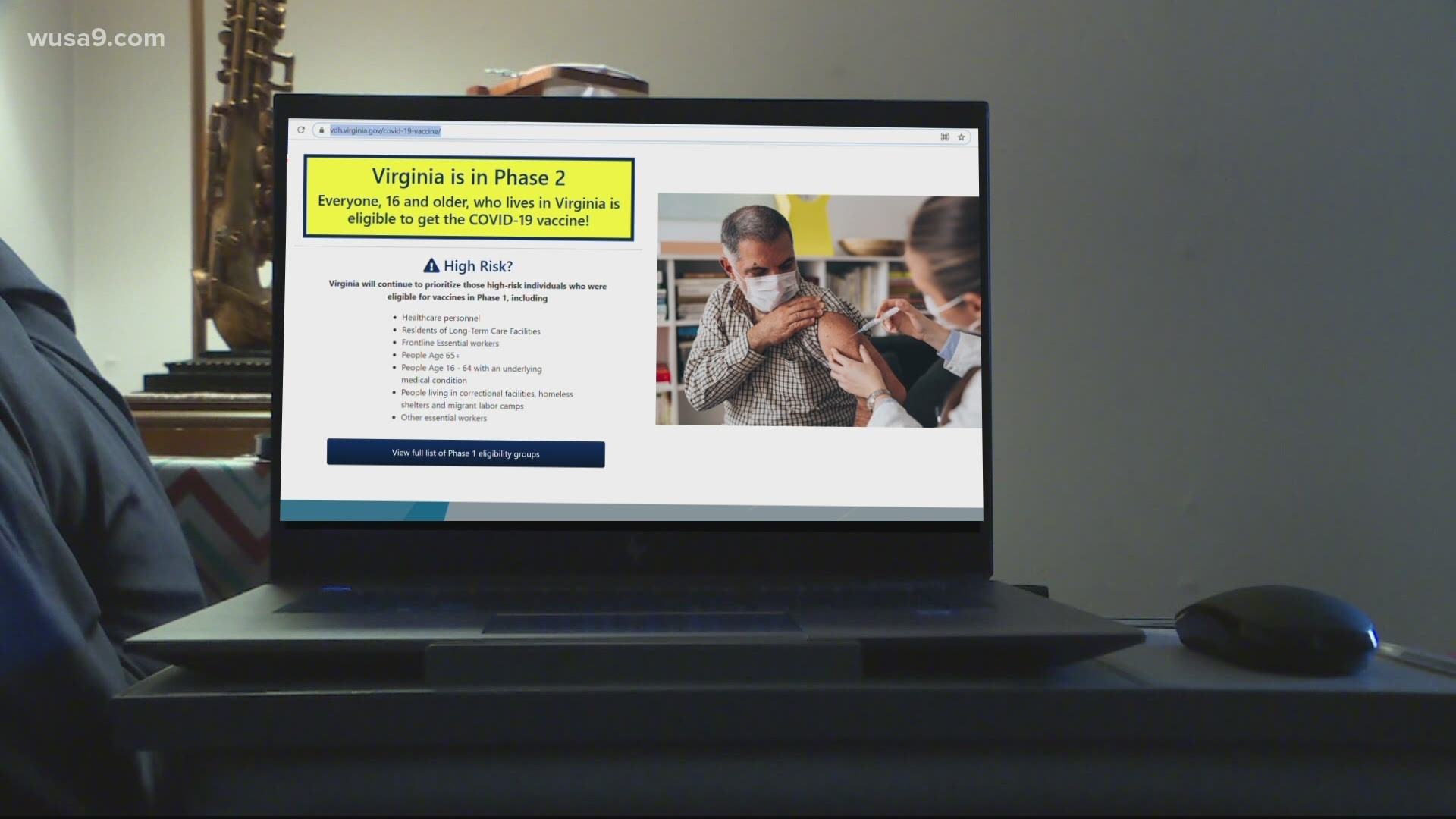FAIRFAX COUNTY, Va. — Vaccine eligibility in the Commonwealth increases April 18 as everyone 16 and older who lives and works in Virginia becomes qualified to get the COVID-19 vaccine.
As Virginia expands its vaccine eligibility Fairfax County announced it is also changing its vaccine scheduling process starting April 18.
The county previously relied on its own countywide registration system, opting out of the state’s registration system.
The county is now directing people to schedule a vaccine appointment through VaccineFinder.org.
A county memo said people who meet Phase 1 eligibility criteria can either use the vaccine finder site or register through the state’s vaccine registration system.
“Our current registration system was required in Phase 1 to accommodate the prioritization of residents when local health departments were the primary community vaccination sites,” a county memo reads. “In Phase 2, the larger pool of community vaccination sites allows us to shift to this new process, which will allow greater flexibility and choice of where residents receive their vaccine.”
The county said clinics managed by the County Health Department and some of its partners may not be listed on the VaccineFinder website until late April or early May due to supply and vaccination people currently on the waitlist.
If you qualify for a vaccine under phase 1 and already on Fairfax County’s waitlist the county said you will get an alert to set up your appointment by April 24.
The state’s move to phase 2 is ahead of President Biden’s national goal deadline of May 1, however, vaccine supply remains an issue.
“The high demand for vaccination in Fairfax County combined with the available vaccine supply will continue to be a challenge, especially in the initial weeks of Phase 2,” board of supervisors Chairman Jeffrey C. McKay said. “With patience and care, we will get everyone vaccinated.”
Maryland and D.C. expanded its vaccine eligibility to 16 and older earlier this month.
Some counties in the Commonwealth moved to phase 2 prior to the state’s transition.

